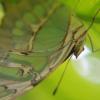So, I am brand new to formiculture and anting in general. From the research I have done, my current understanding is this:
Certain species tend to fly at certain times of year, with the majority flying between May and August.
The conditions most conducive to finding queens are:
1. Recent rain (last few days)
2. Warm weather (75F+)
3. nuptial flights tend to be in the early morning or late evening
4. Some species of queens can be found near bright lights at night.
5. The best time to find queens if right after a nuptial flight, either on the ground or in a founding chamber.
6. Queens with no wings are more likely to be fertile than those with (but with wings can still have mated already).
7. Not all big ants are queens, some are either male alates or major workers
8. Founding chambers tend to look like mini anthills, with freshly dug loose soil in a small mound around a central tunnel or hole.
Other than that, I don't really know what I am looking for. Do queens tend to dig founding chambers in loose soil, moist soil, shade, etc? Should I be overturning rocks and logs? I've gone on several hunts, and I have managed to find only one queen which sadly died. I would really like to get out there and find queens, but I think I am looking in the wrong spots or the wrong time of day. Any guidance would be amazing. For the record, I live in Southern California, between the Santa Monica Mountains and Los Padres Forrest. Thanks a ton for any help you can provide.






















